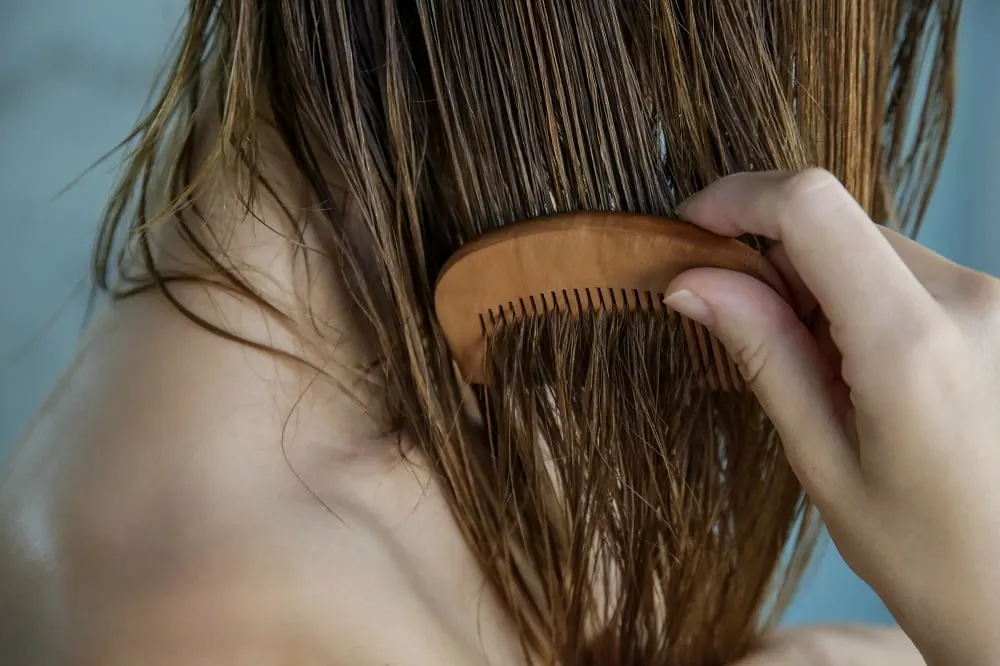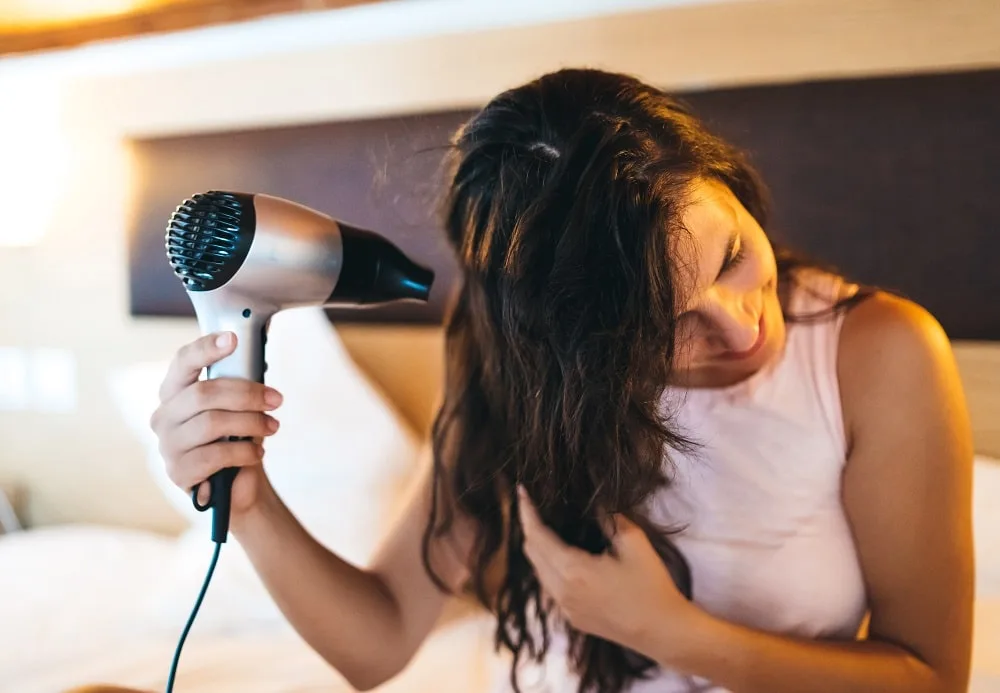It’s far too easy to treat damp hair the same as you would when it’s dry – it’s still your hair, after all. Wet hair actually experiences a lot of changes at every aspect of the hair shaft, so it should be handled much differently than hair that is dry.
What is Damp Hair?

When wet, hair is totally soaked through with water. Damp hair, however, typically occurs after you get out of the shower and have gingerly removed water by towel drying hair. You’ll know your hair is damp when it’s no longer dripping but is still very clearly not dry.
Just as hair goes through physical change when damp, the hair also takes on certain properties in this state that require special attention and care.
Below are 6 things you should know about damp hair so you can care for it properly and avoid any unnecessary future damage.
1. It’s more elastic.
Have you ever noticed that your hair becomes stretchier when wet? This elasticity means your hair is subject to breakage when damp and should be handled with care. Once you’re out of the shower, use a wide-tooth comb or a soft-bristled brush like a Wet Brush to detangle hair. Never use a regular brush.
This elastic element of damp hair also means you should never pull it into a bun in this state. Any up-do will prevent the hair inside from drying and can cause long-lasting irritation on the scalp.
2. Damp hair should be combed from the ends to the roots.

You may need a leave-in conditioner for this one. When combing, starting at the top of the head will only push down any knots, breaking hair and creating more tangles. Comb hair, one section at a time, from the bottom of the hair and on up for smooth sailing.
3. It’s more porous.
This porosity means that it’s also the best time to apply products that you want to penetrate, like curl cream, oils, or a leave-in conditioner. If you’re applying a pre-poo mask or oil treatment, hair should be damp first. Just make sure that hair is actually damp, not dripping, when adding any products.
4. Damp hair should be dry before bedtime.
Have you ever gone to bed with wet hair only to wake up in the morning and your hair looks funky and matted? Unless you’re sleeping on a 100% silk pillowcase, going to bed with a wet head can cause tangles and breakage. Give hair a quick blow-dry before hitting the sack.
5. It should be cared for gently.
It’s so easy to get out of the shower and roughly tousle wet hair with a towel. Remember, wet hair is elastic and needs gentle care. Try out a microfiber towel or shammy if you notice that you’re too aggressive with a towel.
6. It can’t handle hot tools.

Straightening or curling hair when wet may seem like a quick-fix way to get ready fast, but all you’ll manage to do is fry the cuticle and evaporate the wetness inside of the hair shaft, causing major damage to your locks. If you’ve ever done this and heard sizzling or popping sounds, then you’ve experienced this unfortunate destruction.
Instead, apply a pre-styling oil or serum to damp hair and blow-dry on the cool setting if you’re in a rush.
FAQs
Wet hair is when your hair has been soaked in water and is dripping wet. This happens right after you emerge from swimming without a swimming cap, or right after you wash your hair. Damp hair isn’t completely wet but is on the way to becoming dry. It is no longer dripping.
No. In fact, damp hair is moisturizing to the hair and scalp, which is actually beneficial. Some people dampen their hair daily in order to maintain hydration.
Yes, but it’s best if you use a leave-in conditioner first to ease combing and aid detangling.
You can put on a leave-in conditioner, a detangling product, a curl definer, mousse, hair gel, or texturizing sprays. Most products are designed to be used on damp hair as the moisture in your hair helps the product to work.
Yes, you can use natural oil on your hair in place of a leave-in conditioner. If you only use a few drops, it will dry without greasiness and give you a nice sheen.
Yes, but it might take longer to process and your hair might not lift as much.
Yes, but the resulting color will be more subtle.
No. This causes the water in the hair to boil, making bubbles that cause fissures in the hair and major damage.
Blow-drying damp hair can help lock in the style. But it’s best to use low heat and move the dryer around, not allowing it to be focused on any one area of your hair.
It’s clear that damp hair is the fussy sister to your dry locks, but it’s worth it to take caution. Proper care for your hair is essential during all of its stages. Damp hair needs gentle care to avoid breakage and give your hair the gorgeous glow it deserves.
You May Also Like
